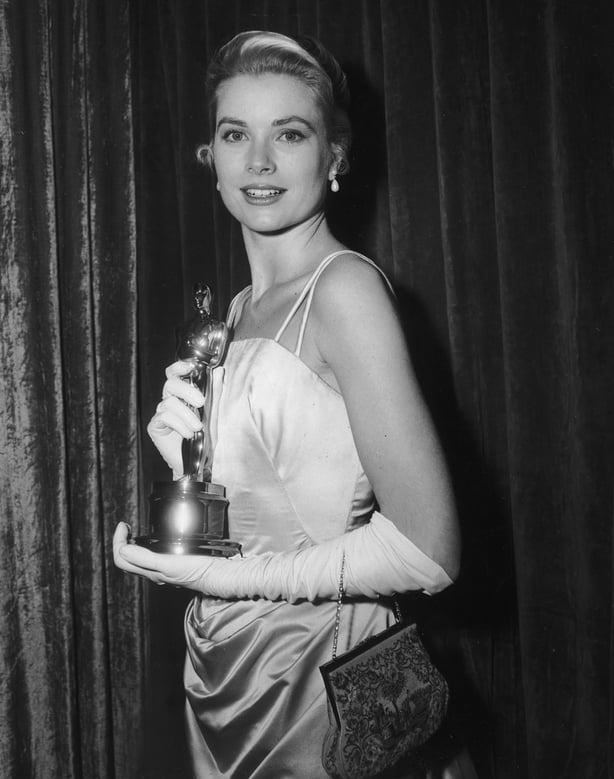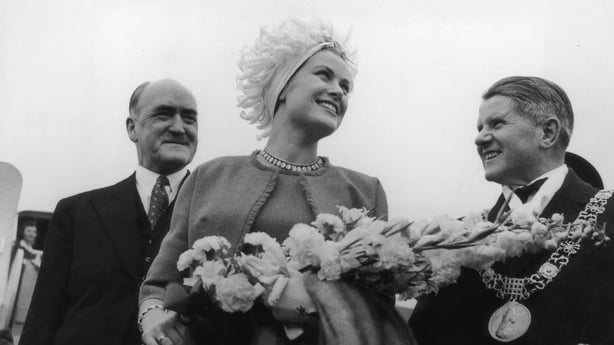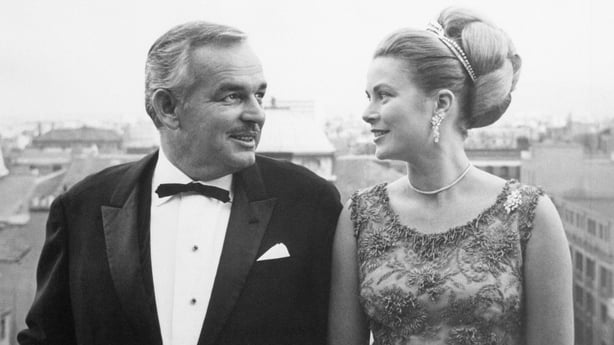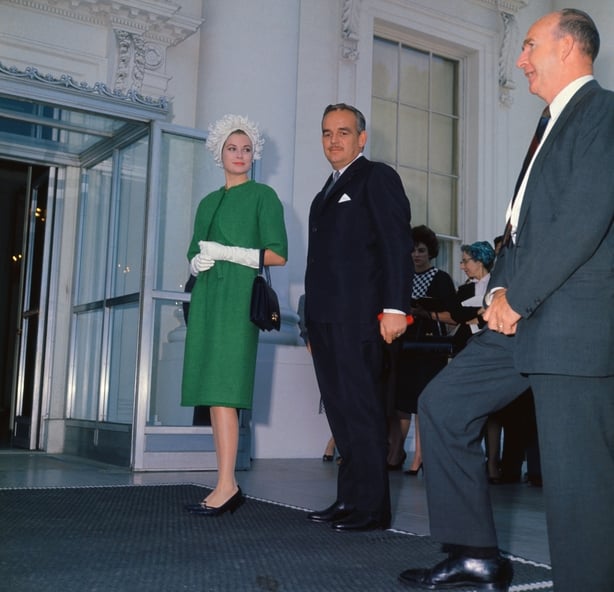The director of TG4's Christmas Day documentary on Irish-American icon Grace Kelly has told RTÉ Entertainment that it will show viewers "how much she did for the image of Ireland and the Irish abroad".
Born into an Irish-American family in Philadelphia in 1929, Grace Kelly was a Best Actress Oscar winner by her 20s for her performance in 1954's The Country Girl. Her other screen credits included the all-star musical High Society, Alfred Hitchcock's Dial M for Murder, Rear Window, and To Catch a Thief, and the classic western High Noon.

In April 1956, Grace Kelly married Rainier III, Prince of Monaco, becoming Princess Grace of Monaco and retiring from acting. The couple had three children.
Throughout her life, Grace Kelly celebrated her Irish roots and family ties to Newport, Co Mayo. She wore green to the White House in 1961 and, that summer, accompanied Prince Rainier on a state visit to Ireland - the first official visit to Ireland by any head of state since the foundation of the State.

Grace Kelly died at the age of 52 in September 1982. She crashed her car after suffering a cerebral haemorrhage while driving in Monaco, passing away a day later in hospital.
Earlier this year, a sculpture of Grace Kelly was unveiled by her son, Albert II, Prince of Monaco, in Newport, Co Mayo, and now her life is celebrated in the TG4 documentary Grace Kelly: Banphrionsa Mhaigh Eo (Grace Kelly: Mayo Princess), which airs on Christmas Day at 9:30pm.
Below, the documentary's director, Brian Reddin, discusses paying tribute to an Irish great.
Harry Guerin: When did Grace Kelly first come on your radar as a film fan and when did you discover her love of Ireland?
Brian Reddin: I'm a huge fan of Alfred Hitchcock and I've watched everything he ever made. One of my favourite films he directed was Rear Window and that's the first time I saw Grace Kelly on screen. She was brilliant in that movie and the two other films she made for Hitchcock. There is a reason he loved working with her. Apart from looking stunning on screen, there was an independent streak in her that he captured brilliantly. In Rear Window, for example, she has to be the active one because Jimmy Stewart's character is in a wheelchair. The scene where she infiltrates Raymond Burr's apartment to find evidence of murder is one of the most tense Hitchcock ever directed.
My mother loved Grace Kelly so I always knew she had Irish roots, as she would often talk about her. I didn't know how deep those roots went until I started exploring her story for the documentary. Then, I found lots of newspaper reports of her visits here and interviews she gave about her Irish heritage. As I researched the documentary further, I discovered just how strongly she identified as Irish.
You've made Christmas Day documentaries for TG4 before on Peter O'Toole, Maureen O'Hara, and more. How long has Grace Kelly's story been in the works?
It's become something of a tradition that I make movie-related documentaries for TG4 on Christmas Day - long may that continue! They always do well in the ratings because they are nostalgia-based with good characters and are a comforting Christmas watch. As well as Maureen O'Hara, Peter O'Toole, and Richard Harris, last year I made one about the great Cyril Cusack, and as soon as that aired, I began thinking about what I could do next. Up until now, I have focused largely on Irish-born actors, albeit O'Toole was born in Leeds. I thought it would be interesting to look at Irish-American actors instead and top of the list is Grace. So, it's taken a whole year from discussing it first with TG4 to getting it on air.
You've travelled far and wide for this one. What did you learn along the way?
We shot all over Mayo - in Newport particularly where Grace Kelly's grandfather came from. We also went to Philadelphia, where she was born and grew up, and then to Monaco, where she lived as Princess Grace. The most interesting thing I discovered along the way was the way the Irish were treated in Philadelphia. When Grace's grandfather, John Henry Kelly, arrived there in 1869, the Irish were not welcomed. They were often looked down upon as poor, illiterate, second-class citizens. There had been Nativist Riots in Philadelphia in the 1840s where American Nationalists had attacked Catholics and Irish immigrants. So, the Irish were not welcome. They had to work hard to be accepted into American society and that was the background to Grace's life in Philadelphia. I found it fascinating that she would become an American icon when her grandfather would have been deported if some of those extremists had their way.
We need your consent to load this rte-player contentWe use rte-player to manage extra content that can set cookies on your device and collect data about your activity. Please review their details and accept them to load the content.Manage Preferences
Among your interviewees is Albert II, Prince of Monaco. What did he tell you about his late mother that fascinated you the most?
He obviously loved his mother deeply and still talks very emotionally about her. What was most interesting was hearing him talk about her as a mother. After all, there are only three people who know what she was like as a mother and it was fascinating to hear how grounded and normal she was. She wanted to bring her kids up with as normal a childhood as possible. We saw that in the home movie footage that Prince Albert and the Palace gave to us. On their trips to Ireland, Prince Albert is brought fishing and encouraged to play in the grounds of the places where they stayed. From talking with him, she came across as very human and not the movie star or princess that we are so used to seeing. He made her very real.
What do you think the biggest misconception is about Grace Kelly or what do Irish people not realise?
I think the biggest misconception is that she is often seen as this icy, aloof, blonde, elite character, but I think that comes from her portrayal of that type of character in High Society. In fact, she was very approachable and very down to earth. Her family in Mayo got Christmas and birthday cards from her every year. I also think her importance as an Irish-American cultural icon and member of our diaspora is often overlooked. Remember, she came here in 1961, making her visit the first official visit to Ireland by any head of state since the foundation of the State. That is hugely significant.

Everyone talks about JFK coming here in 1963, but Grace did all that two years before him. Her visit shone an international light on Ireland. She was on the front of Time magazine, hundreds of reporters followed her every move. News crews from all over the world filmed her visit. It showed the world a new Ireland, an Ireland emerging from the dark 1950s into a new age and she was at the centre of that. So, I think it is important to realise how much she did for the image of Ireland and the Irish abroad and showed the world that we could be progressive and glamorous and worthy of our place on the world stage.

There's a younger generation of film fans who may not know Grace Kelly's work on screen. What movies would you suggest they watch?
Easy. Rear Window and High Society. Rear Window is just a classic. Great performances and great suspense. If you haven't already seen it, I can't recommend it highly enough. Similarly, with High Society, it's just a beautiful feelgood musical with great numbers and what a cast. Frank Sinatra, Bing Crosby, Louis Armstrong, Celeste Holm - and you get to hear Grace singing too.
Have you started on your 2024 Christmas documentary for TG4?
I have. Next year is the 60th anniversary of the launch of Radio Caroline, and the man behind that iconic pirate radio was Ronan O'Rahilly. He was a fascinating Irishman and a central figure in the swinging 60s counterculture in the UK. [He was] The grandson of rebel The O'Rahilly who took on the British establishment in an entirely different way. He is the focus of my next TG4 documentary.
Grace Kelly: Banphrionsa Mhaigh Eo, TG4, Christmas Day, 9:30pm

